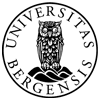Monge marinho: diferenças entre revisões
Fonte: Lexicomarinho
Sem resumo de edição |
Sem resumo de edição |
||
| Linha 1: | Linha 1: | ||
<gallery mode= | <gallery mode=packed heights=30px class=center> | ||
GB.jpg|English|link=https://wiki.uib.no/marinelexicon/index.php/Mermonk | GB.jpg|English|link=https://wiki.uib.no/marinelexicon/index.php/Mermonk | ||
NO.jpg|Norsk|link=https://wiki.uib.no/marinleksikon/index.php/Havmunk | NO.jpg|Norsk|link=https://wiki.uib.no/marinleksikon/index.php/Havmunk | ||
Revisão das 12h44min de 23 de abril de 2021
-
English
-
Norsk

Léxico Marinho — Mamíferos marinhos — Criaturas mitológicas — Atividades relacionadas com mamíferos marinhos — Toponímia — Zooarqueologia — Fontes históricas — Citar Léxico Marinho

monge marinho • Nordic creature that is mentioned by the Swiss naturalist Conrad Gesner in his chapter on merpeople[1]. Apparently, a mermonk was captured by herring fishers in the Baltic Sea near Copenhagen. Gesner also mentions a merbishop that was captured near Poland in 1531.
- Português
- Monge marinho
- Inglês
- Mermonk
- Norueguês
- Havmunk (literal translation; not known in Norwegian mythology)
- Holandês
- Zeemonnik (literal translation; not known in Dutch mythology)
- Alemão
- Seemönch
- Francês
- Moine de mer; Poisson-moine
- Espanhol
- Italiano
- Grego
- Crioulo
Referências
- ↑ Conrad Gesner, 1604: Historiae animalium, p. 439.
